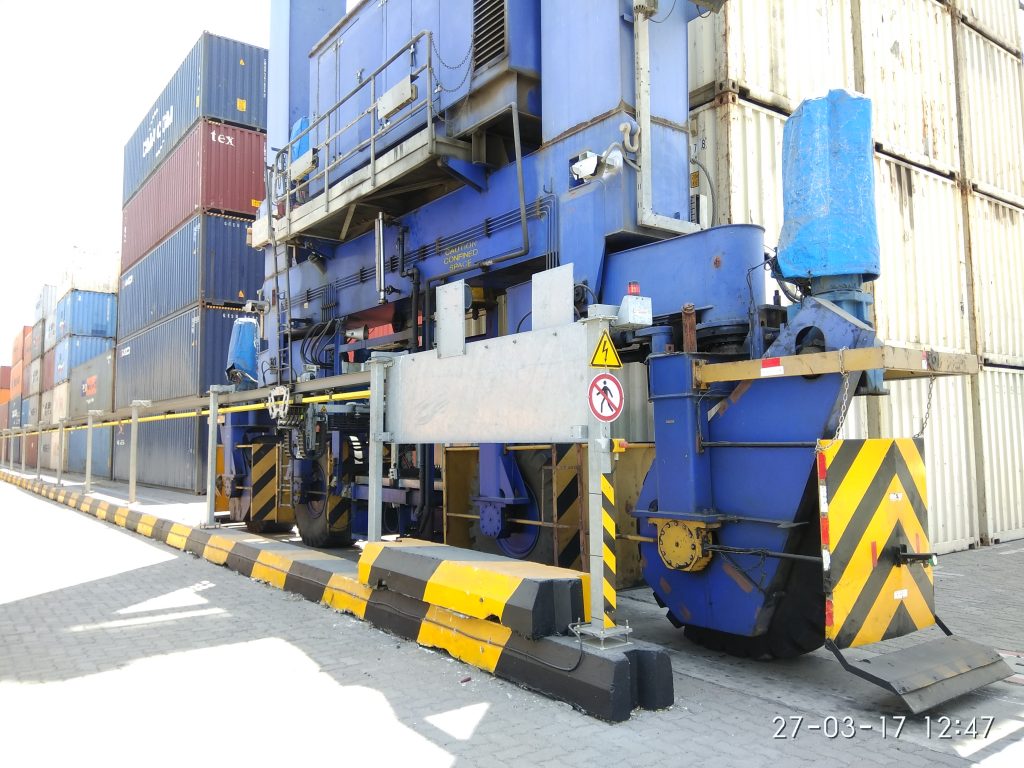Diesel powered rubber tyre gantry cranes account for nearly 60% of a terminal’s diesel consumption. LURED BY SAVINGS in energy costs and reduced emissions, terminals around the globe are reassessing the financial case for converting existing diesel rubber-tyred gantry cranes to electric operation. Terminals in India are aggressively deciding to convert their existing fleet to run on electricity.
Kishor Dagia, Manging Director, Conductix-Wampfler India says “Most Indian terminals desire t maximum productivity from yard equipment and hence RTGs are not allocated to specific stacks, but rather moved around the yard in line with operational requirements. The drivers for this chageover are the financial case and reduction of CO2 emissions.”
Asked about return on investment, he says this is dependant on the port operation in which the RTGs are involved, essentially coming down to number of stacks, RTGs and the monthly TEU throughput. “However, on average, we would suggest an ROI ts possible within around 3-5 years,” says Mr Dagia.
Although large terminal operators in India – Adani, DP World and APMT have provided Conductix-Wampfler with conversion work, its contracts have by no means been limited to this size of company. Continental Warehousing Corporation (Nhava Seva) for example, is a rather small CFS operator, moving to take the step towards all-electric operation. Asked whether there are any disadvantages to making the switch, Mr Dagia says that none so far . To the contrary, switching from diesel power to electric power saves diesel, maintainance costs and improves operator efficiencies by creating a more silent environment.
Conductix-Wampfler is also acutely aware that terminals are seeking to sideline diesel generators on board their RTGs keeping in mind their operational uniqueness and hence offers a variety of solutions, ranging from Conductor Rails to Cable reels and Battery based hybrid solutions. Accoring to Mr. Dagia “ Conductix Wampfler, is heavily investing in R&D to further their solution package as is envisaged from our unique Auto-plug in / plug-out cable reels to Hybrid systems where the RTG operates fully on battery pack and uses only a small Diesel generator to move between blocks. Where there are a lot of stacks – 30 or above – and fewer RTGs – 12-18 with many block changes the conductor rail system is usually preferred. But in samller terminals on the East coast where there are very few stacks, the cable reel possibly makes more sense. Battery Hybrid or Plug-in type solutions are ideal for CFS operations which have 1-3 RTGs and 1-2 blocks”
With more than 125 RTGs electrified in India by solutions engineered at the Center of Excellence in Germany and executed by Conductix-Wampfler India, as a market leader Conductix-Wampfler is aware of it’s responsibility to innovate and prepare solution for the future – Terminal Automation. Conductix-Wampfler has innovated with the ProfiDAT ® solution. “We designed the system so that any terminal with our Conductor rail E-RTG solution could retofit and upgrade with the ProfiDAT® solution at any time,” says Philip Wasmer, Global Market Manager – Container Handling at Conductix-Wampfler. The integrated data-transmission system combines a data-transmission channel with a conductor rail that can also be used as a ground conductor rail. “The conversion can therefore be carried out without any great installation effort, since the existing ground conductor rail is simply replaced by the combined profile without the need for additional installation space,” says Mr. Wasmer.








